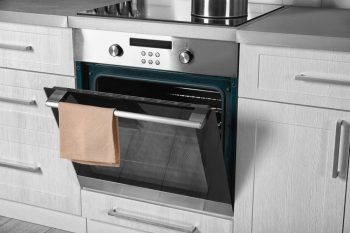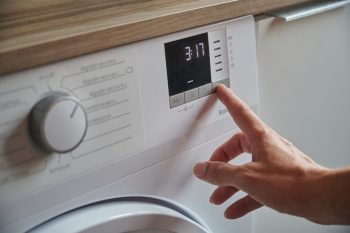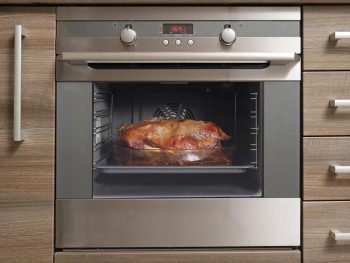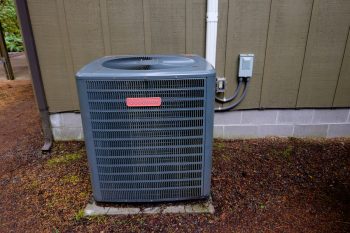
Freon is a brand name for refrigerant but can also be a generic name for several halocarbon refrigerants. It is used in a compressor-based humidifier to convert and collect water into condensate.
While freons are low toxic and nonflammable, unfortunately, they are not environmentally friendly, causing ozone depletion. If you are worried about the safety freon in your dehumidifier, you can remove it and replace it with a safer alternative. So, how do you remove freon from a dehumidifier?
Unlike most DIY projects, removing freon from a dehumidifier requires specialized equipment. You also need to be certified to remove this refrigerant.
As such, the easiest way to remove freon from a dehumidifier is by calling a certified technician. The technician then follows the steps below to remove the freon:
- Access the condenser
- Get a recovery system
- Connect the recovery system to the condenser
- Transfer the freon to the recovery system
- Dispose of the freon
While the toxicity of freon is low, prolonged exposure can lead to severe lung damage, long-term brain damage, and sudden death. As such, whenever you suspect freon leakage from your dehumidifier, call a professional immediately.
Steps To Remove Freon From a Dehumidifier
According to the Environment Protection Agency’s regulation, individuals should not remove refrigerant or freon from a dehumidifier. Only section 608 technicals are certified to remove freon from your dehumidifier.
This act is not because freon is toxic to humans but because the accidental release of the refrigerant into the atmosphere is hazardous to the planet, causing the greenhouse effect.
So, except if you are a certified technician, don’t attempt to remove the freon from your dehumidifier yourself. Instead, call a certified professional to remove and dispose of the freon properly.
The certified technician removes the freon in your dehumidifier using the steps below:
Step 1: Access the Condenser
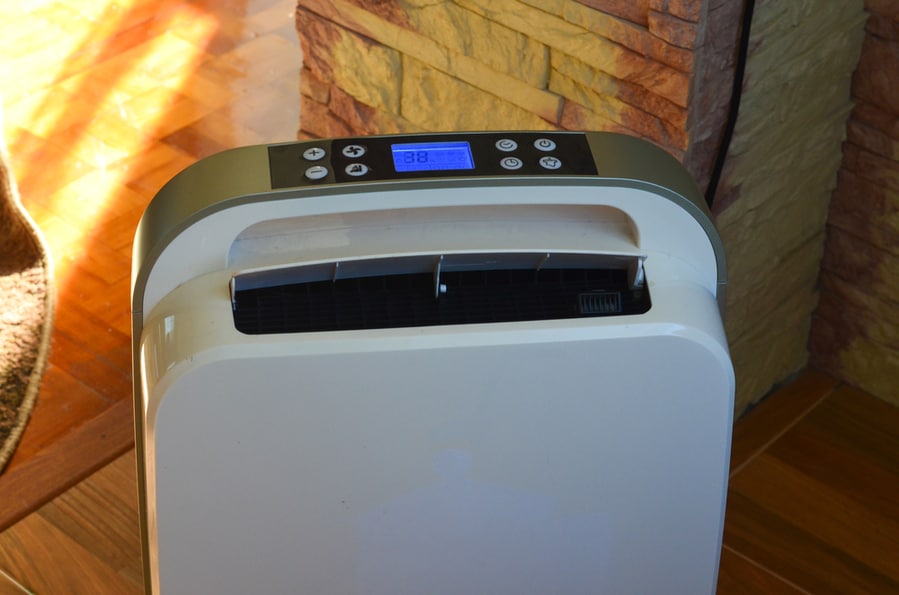
The first thing a technician does is to access the condenser. So, the technician disconnects the power to the dehumidifier and removes its plastic covers by unscrewing it and pulling it off.
With the cover out, the technician will be able to access the copper coils of the condenser, which is where the freon is.
Step 2: Get a Recovery System
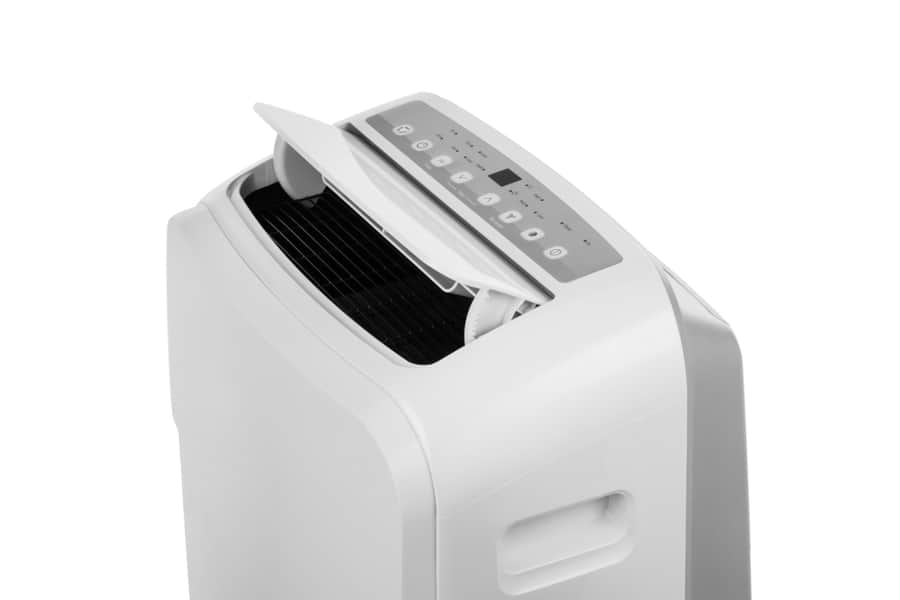
To pull out the refrigerant from the dehumidifier, the technician does not merely cut the line and let the freon out into the environment. Cutting the coil to release the freon into the environment will be irresponsible, not to mention that it is illegal.
Instead, the technician uses a machine known as the refrigerant recovery unit. This device works with the same principle as vapor compression cycles.
Step 3: Connect the Recovery System to the Condenser
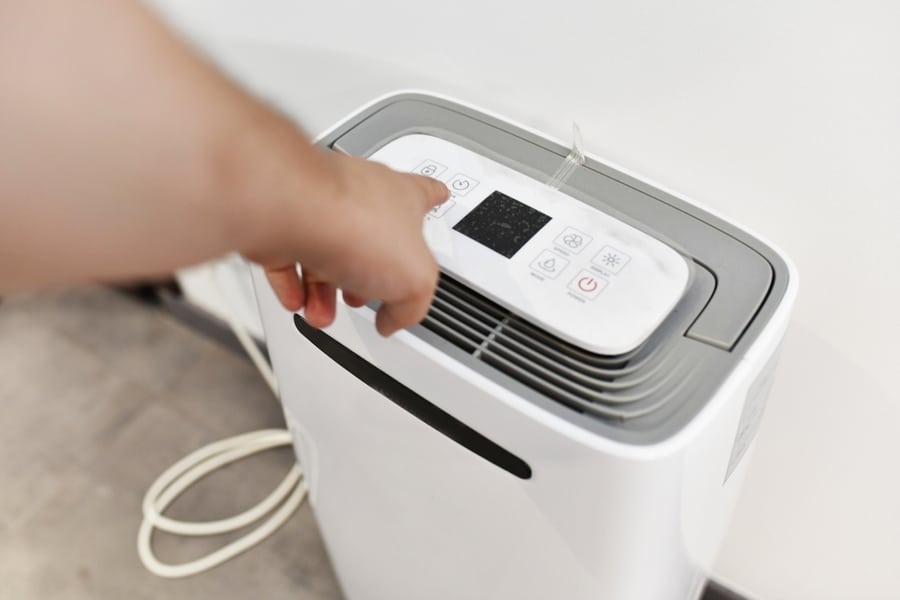
The technician then connects the condenser of your dehumidifier to the recovery system in series to draw the gaseous refrigerant from the unit.
The series arrangement of the vacuum source and the compressor creates enough suction of about -29 inHg.
Step 4: Transfer the Freon to the Recovery System

When the valve of the recovery system is turned on, it draws the freon from the condenser of the dehumidifier into its compressor. This converts the gaseous refrigerant into a liquid refrigerant and is stored in a tank like the propane tank.
Step 5: Dispose of the Freon

The technician then takes the freon to the proper disposal facility. The technician sends the recovered refrigerant to the refrigerant manufacturer or a reclaimer, who then reprocesses the recovered refrigerant to at least the purity specified in the AHRI Standard 700-2016 using specialized machinery.
Environmentally Friendly Alternatives to Freons
Since 1994, freons, or HFC-134a, have been the most common refrigerant replacing the CF-12. But like its counterpart, it is also a potent greenhouse gas with a high global warming potential even though it is not ozone-depleting like CFC-12.
As of 2012, manufacturers started using more environmentally friendly alternatives, which include:
1. R-152a or HFC-152a
The R-152a is a pure hydrofluorocarbon refrigerant used in many applications. It features a significantly lower GWP of 124 and a zero ozone-depleting potential.
The R-152a has a purity of 99.5%. It is a low-flammable gas classified under the ASHRAE A2 safety.
As a result, due to the risk of a leak, it is required not to use a concentration of 3.7% v/v or above in closed spaces.
Aside from that, using the R-152a as a replacement refrigerant for R-134a reduces the refrigeration load by about 30%, lowering the global warming potential of the demulsifier.
2. R-1234yf
The R-1234yf is a pure hydrofluoroolefin (HFO) refrigerant with considerably lower global warming than R-152a.
It was developed to abide by the provisions of Regulation (EC) no. 517 to decrease the global warming potential of hydrofluorocarbon refrigerants.
This refrigerant is mostly used in the automotive industry and other sectors, like dehumidifiers.
R-1234yf is a low-flammable refrigerant classified under the ASHRAE A2L safety. As an eco-friendly alternative, this refrigerant has an ultra-low global warming and zero ozone-depleting potential.
3. R-744
The R-744 is by far the best refrigerant you can use in terms of being environmentally friendly. It has a zero ozone-depleting potential and a global warming potential of 1, making it less global warming potential than hydrocarbon.
Although it does not function the same way hydrocarbons operate, it requires an elevated operating pressure of 5 to 10 times higher than other MVAC systems.
Unlike other refrigerants, the R-744 is exempted from the Section 608 venting prohibition. So, it is legal to release it to the environment knowingly.
But it is not exempted from the Section 609 requirement that a certified technician handles it.
Conclusion
Considering the adverse effect of freon on the atmosphere, it’s understandable if you desire to use a different refrigerant in your dehumidifier.
But you must safely remove the freon from the dehumidifier before filling it with a safer option. You will need to hire a certified professional to help remove the freon from your unit and safely dispose of it.
So, when considering the long-term use of any HVAC device, always consider the refrigerant used.
Frequently Asked Questions
Can You Recycle Freon?
Yes, you can recycle freon to make it safer. But the process of recycling it is complex and requires specialized equipment. In most cases, freon recycling is done by a reclaimer or refrigerant manufacturer.
It involves cleaning the refrigerant using oil separation techniques and passing it through different devices.
How Does Freon Damage the Atmosphere?
Freon is a class of compounds with carbon, hydrogen, fluorine, and chlorine. When released into the atmosphere, it gets into the stratosphere over time and breaks down because of the ultraviolet rays there to release the chlorine in it.
The chlorine then reacts with the ozone layer, thus depleting it and carrying the greenhouse effect.


